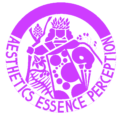There is a shade of purple known as Captain Cook’s purple—the translucent petals basking in the languid afternoon sun evoke an irresistible urge to stroll through gardens with friends, admiring the blooms. It calls to mind the early settlers of the authentic Queensland region. To relocate to a foreign land is to begin anew, to build from nothing. Such courage is rare indeed. Yet the early Dutch immigrants met this challenge with hopeful hearts, carving out new lives upon this land. Like the Cooktown Orchid itself, they thrived resiliently amid the extremes of climate.
In the aftermath of the Second World War, the Netherlands was beset by profound economic and social upheaval, prompting many to seek a fresh start in Australia. Queensland became a principal destination for these Dutch newcomers. They arrived neither disheartened nor downtrodden, but rather bearing gifts of agricultural expertise, architectural knowledge, and commercial enterprise. Particularly in regions such as Mackay and the Whitsundays, the Dutch settlers found fertile ground to apply their skills in tropical agriculture, cultivating not only the land but also a new chapter in their lives.
In tribute to this quietly uplifting chapter of history, I designed a Delft-blue vase—an emblem of refined grace and a gentle longing for home. It holds the Cooktown Orchid, a symbol of quiet resilience, alongside Queensland’s Nymphaea caerulea, the blue water lily, representing the region’s distinctive wetland climate.
From the outset, I knew this composition must speak not of solemnity or stillness, but of joy, and a certain understated splendour. And so, each flower and object was thoughtfully placed within the imagined setting of a garden gathering—an afternoon affair among friends, dappled sunlight falling across the lawn, laughter mingling with birdsong. It is a scene not of grand declarations, but of the kind of contentment that lingers quietly in the heart.
Among the works in this series, most rest upon natural surfaces—stone or earthen walls, echoing the raw presence of the land. Yet this particular piece is set apart by its foundation: a wooden table, quietly evoking the touch of human craftsmanship and cultural refinement.
Upon the table lies a silk napkin, and beside it, a dish of notable local delicacy—finger lime oysters. This pairing is no mere flourish of gastronomy; it is deeply symbolic. The oyster, drawn from Queensland’s coastal waters, speaks of the sea—of journeys across vast oceans, of those who came from distant shores. The finger lime, on the other hand, is a fruit of the rainforest, native and resilient, echoing the deep-rooted traditions of Aboriginal peoples of Australia.
Thus, the meeting of oyster and lime becomes something greater: the sea meeting the forest, the immigrant encountering the Indigenous. It is a quiet metaphor for a shared future—where cultures intertwine, and something altogether new and meaningful is born.
The ceramic vase, along with the finger lime, oysters, and silk cloth, are all rendered in a style reminiscent of the Dutch Flemish tradition—an intentional homage to the historic ties between the Netherlands and Queensland. The foreground, with its meticulous detailing, adopts the Flemish approach: rich in colour, delicately precise, and grounded in a refined realism.
By contrast, the background—its lake and woodland softened into suggestion rather than definition—offers a sense of distance and breadth. This gentle blurring of form allows the space to breathe, expanding the viewer’s gaze into something larger, more contemplative.
The fuller narrative behind this painting, along with its quiet symbolism, is recorded in greater detail within the pages of 《The Beauty of Australia》.
—— A.G
